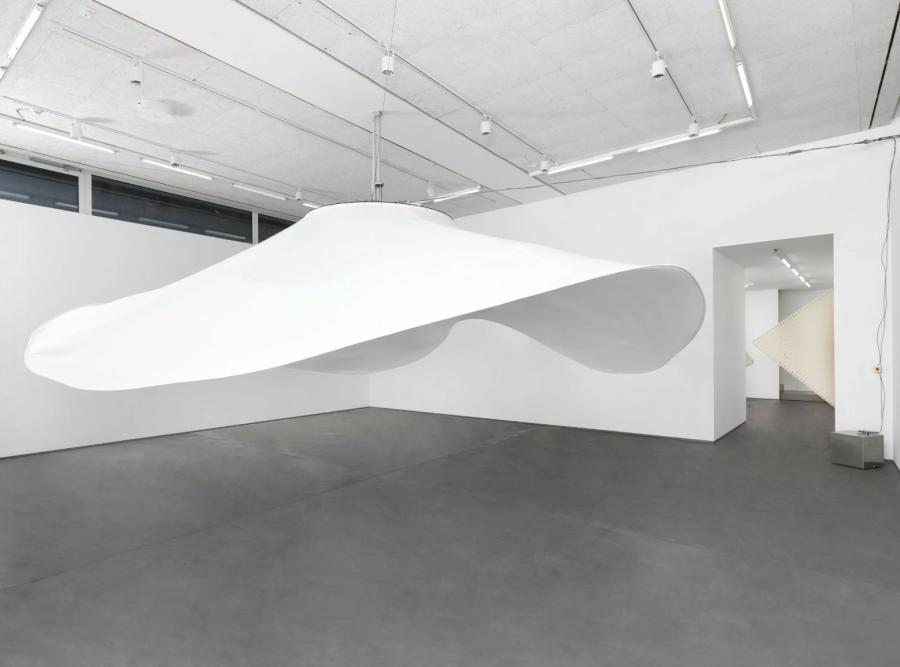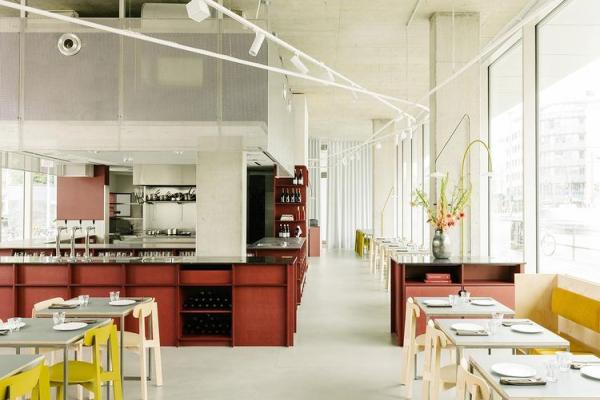Modern european cuisine
Ephemerals
Ephemerals
Ephemerals is a special project by architect Gustav Düsing (b. Münster, Germany, 1984 / lives and works in Berlin, Germany). Düsing’s evolving approach combines architecture, natural phenomena, and environmental responsiveness to create immersive experiences that challenge traditional perceptions of space and structure.
Gustav Düsing and Max Hacke recently won the prestigious Mies van der Rohe Award for their Study Pavilion at the University of Braunschweig, recognized for its innovative use of materials and exemplary integration with the natural environment.
In the main subterranean gallery space, Düsing presents sunsight to sunclipse, a project originally developed at Villa Massimo in Rome in 2021. The title reflects the earth’s rotation around the sun, highlighting that the sun becomes visible (sunsight) and then darkens again (sunclipse). This concept, coined by Buckminster Fuller in his book Operating Manual for Spaceship Earth, likens the earth to a spaceship with its atmosphere as a gigantic architectural shell.
Fuller’s perspective on architecture as a shield against nature’s forces informs this installation. The work sunsight to sunclipse uses natural laws to propose a new form of architecture that is soft, dynamic, and in direct contact with its environment. By harnessing solar energy, the installation behaves in synergy with planetary constellations, transforming energy into architectural space. Influenced by the Coriolis Effect and resembling Rossby Waves—high-altitude winds shaping global weather—this dynamic structure illustrates a new type of architecture integrated into the planetary system. The kinetic structure creates a communal space where people can gather and experience these otherwise invisible forces that significantly impact our lives.
In the second gallery space, Düsing presents a new project titled Picknick (2024), an installation featuring a series of parasols both inside and outside the gallery. These versatile structures can create passages, hideouts, roofs, and tents, offering endless possibilities. The parasols symbolize responsive and adaptable architecture that speaks to the transient and mutable nature of space.
The historian Spiro Kostof has argued that the campfire is one of the most minimal and ancient forms of architecture. A ring of people sitting around a flame, the circular form emerges from the interaction of social and physical factors. Heat from an open fire dissipates with distance: sit too close and you burn, sit too far and you don’t stay warm. Gathered at the optimal distance, our ancient relatives formed a circle around the fire, inscribing the form with a set of interrelational, biological, environmental, and symbolic codes that continue to inform the architectural imagination today. Commonly found in prehistoric societies around the world, the circular form delimits space, encloses community, and provides protection—a closed interior apart from the open expanses beyond its boundaries.
In Gustav Düsing’s ‘sunsight to sunclipse’ (2021), Kostof’s fire is replaced with the sun. Made during his residency at Villa Massimo in Rome, the work defines space as it spins, raising a giant fabric disc into a sinusoidal canopy. Its central motor is powered by solar panels, transforming energy from the sun—a distant spherical flame—into a circular spatial form. In Düsing’s work, circularity extends beyond spinning material and is also practiced through material economy, otherwise known as the circular economy.
The complete essay accompanying the exhibition by Carson Chan, Director of the Emilio Ambasz Institute for the Joint Study of the Built and the Natural Environment, and curator in the Department of Architecture and Design at MoMA, New York, is now available at the gallery and on our website.
The gallery is open Tuesday through Saturday throughout the summer, and we look forward to welcoming you. For further information on the artist and the works or to request images, please contact Owen Clements at owen(at)dittrich-schlechtriem.com.
Recent press features include Frankfurter Allgemeine Zeitung, The Guardian, and Süddeutsche Zeitung
> DOWNLOAD PDF











